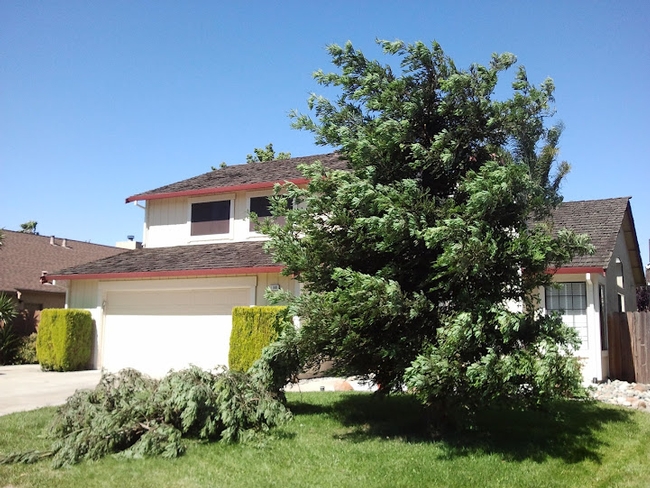- Author: Kathy Thomas-Rico
The winds of late spring are an uncomfortable reality in Solano County. They blew through on June 8 and 9, blustery, drying north winds that disrupted graduation ceremonies, outdoor weddings and picnics at the park. Broken tree branches and piles of leaves and twigs, pushed up against north-facing fences and gutters, were evidence of the onslaught.
A realist would shrug off the loss of large branches as Mother Nature’s rather brutal pruning plan. Sometimes that’s a hard pill to swallow. A friend of ours lost the top third of a redwood tree planted in his front-yard lawn. When I heard this, I immediately thought of another friend who had recently told me about losing the top portion of a redwood tree on her property. Turns out, that loss was due to lack of water, but both of my friends now face a tricky situation: What do you do with a fast-growing evergreen that loses its terminal bud leader?
Redwoods that have been topped — whether by nature or humans — tend to freak out, sprouting from masses of dormant buds just below the topping cut and under the bark. This results in an extremely fast-growing tangled mess of unstable branches where once there was one tidy and elegant trunk. These masses are weak and tend to peel away in strong winds (which we know will return in late spring).
What my friends now face is quite possibly annual pruning of those redwoods. They must be prepared to maintain the sprouts and trim any large branches regularly. And they should consult with a certified arborist to do this work.
Redwood trees are considered to be wind-resistant trees. It appears my friend’s front-yard tree, though robust and healthy in appearance, faced prior stress and had become weakened somewhere along the way. Leave it to the winds of late spring to test that stress. Maybe it’s Mother Nature’s pruning plan after all.




